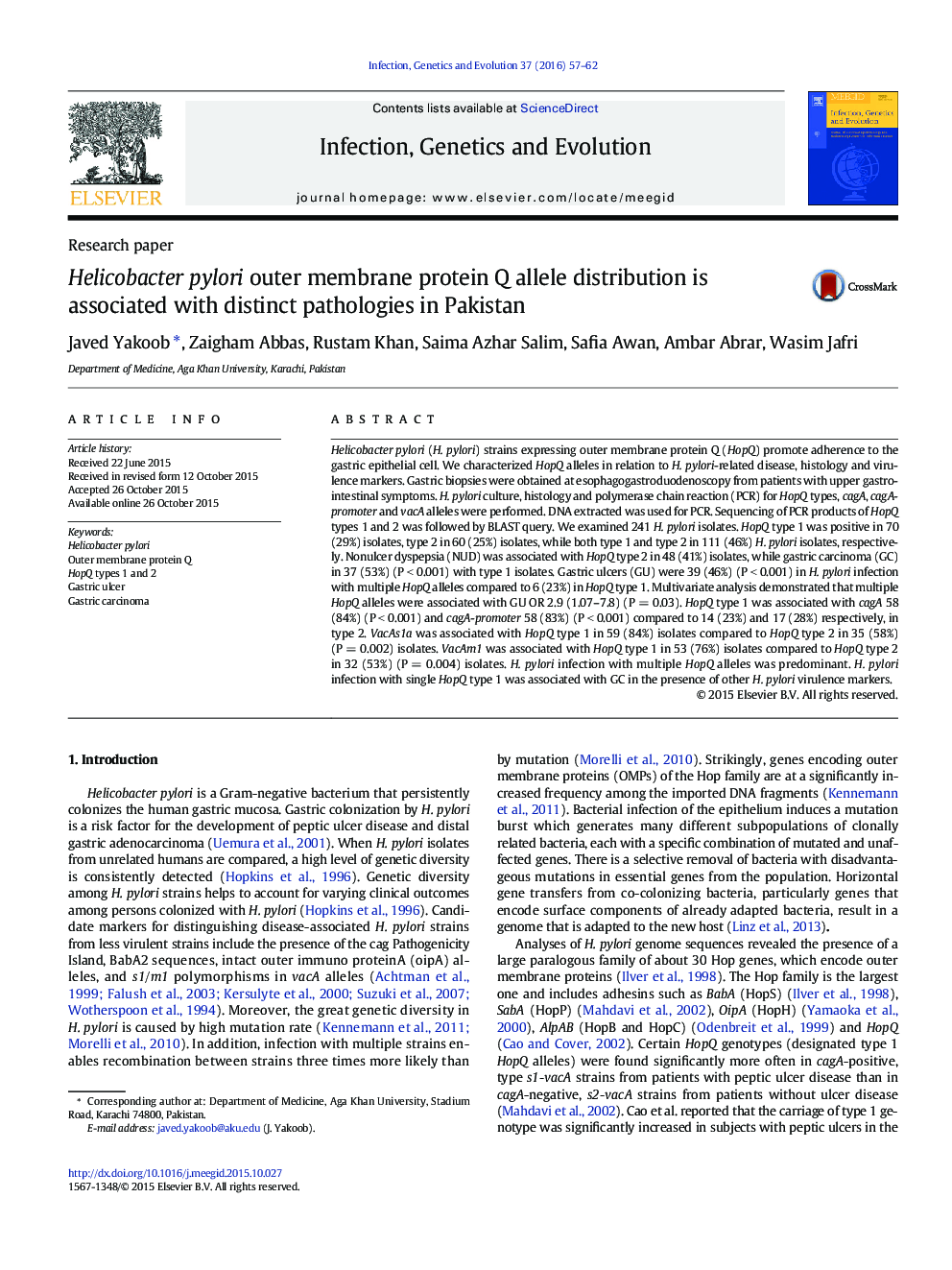| Article ID | Journal | Published Year | Pages | File Type |
|---|---|---|---|---|
| 5909076 | Infection, Genetics and Evolution | 2016 | 6 Pages |
Abstract
Helicobacter pylori (H. pylori) strains expressing outer membrane protein Q (HopQ) promote adherence to the gastric epithelial cell. We characterized HopQ alleles in relation to H. pylori-related disease, histology and virulence markers. Gastric biopsies were obtained at esophagogastroduodenoscopy from patients with upper gastrointestinal symptoms. H. pylori culture, histology and polymerase chain reaction (PCR) for HopQ types, cagA, cagA-promoter and vacA alleles were performed. DNA extracted was used for PCR. Sequencing of PCR products of HopQ types 1 and 2 was followed by BLAST query. We examined 241 H. pylori isolates. HopQ type 1 was positive in 70 (29%) isolates, type 2 in 60 (25%) isolates, while both type 1 and type 2 in 111 (46%) H. pylori isolates, respectively. Nonulcer dyspepsia (NUD) was associated with HopQ type 2 in 48 (41%) isolates, while gastric carcinoma (GC) in 37 (53%) (PÂ <Â 0.001) with type 1 isolates. Gastric ulcers (GU) were 39 (46%) (PÂ <Â 0.001) in H. pylori infection with multiple HopQ alleles compared to 6 (23%) in HopQ type 1. Multivariate analysis demonstrated that multiple HopQ alleles were associated with GU OR 2.9 (1.07-7.8) (PÂ =Â 0.03). HopQ type 1 was associated with cagA 58 (84%) (PÂ <Â 0.001) and cagA-promoter 58 (83%) (PÂ <Â 0.001) compared to 14 (23%) and 17 (28%) respectively, in type 2. VacAs1a was associated with HopQ type 1 in 59 (84%) isolates compared to HopQ type 2 in 35 (58%) (PÂ =Â 0.002) isolates. VacAm1 was associated with HopQ type 1 in 53 (76%) isolates compared to HopQ type 2 in 32 (53%) (PÂ =Â 0.004) isolates. H. pylori infection with multiple HopQ alleles was predominant. H. pylori infection with single HopQ type 1 was associated with GC in the presence of other H. pylori virulence markers.
Related Topics
Life Sciences
Agricultural and Biological Sciences
Ecology, Evolution, Behavior and Systematics
Authors
Javed Yakoob, Zaigham Abbas, Rustam Khan, Saima Azhar Salim, Safia Awan, Ambar Abrar, Wasim Jafri,
